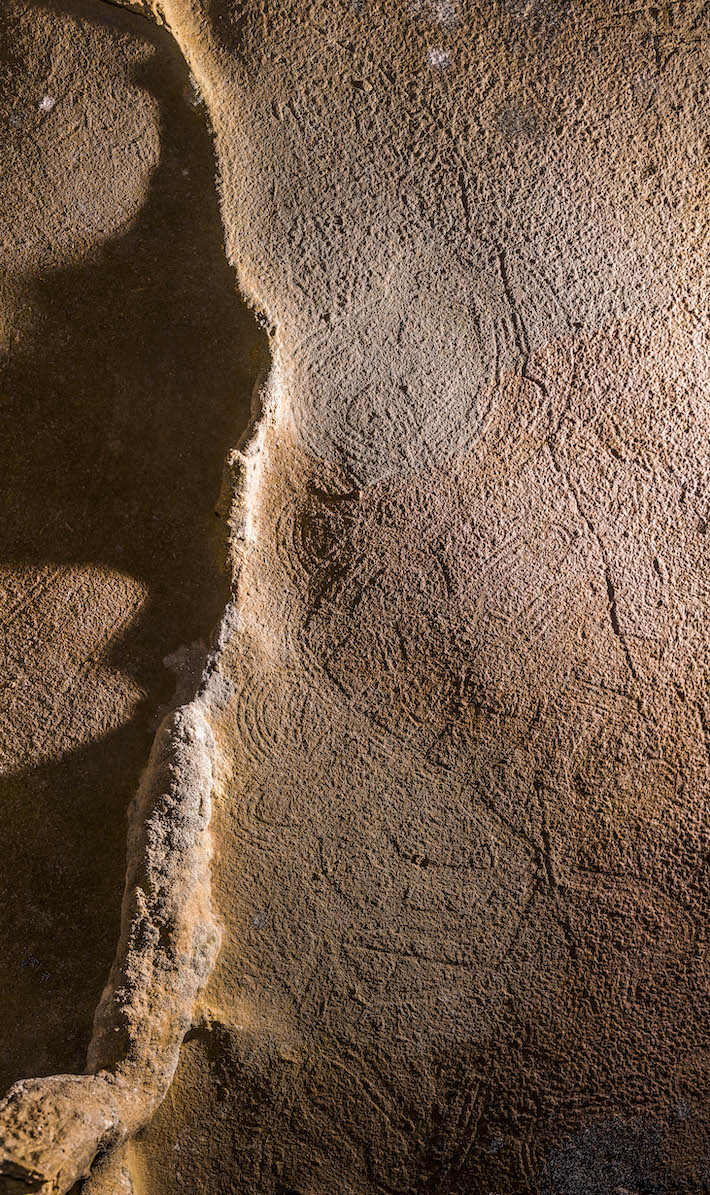 KNOXVILLE, TENNESSEE—Science Magazine reports that a project to document etchings of birds, snakes, wasps, and overlapping patterns of lines on the ceiling of an underground cave in northern Alabama with 3-D photogrammetry has revealed previously undetected images of three human-like figures, a serpent with scales, and a swirling figure with a rattlesnake tail. One of these images measures about 11 feet long, making it the largest known in North America. Jan Simek of the University of Tennessee explained that because the cave’s ceiling is less than two feet from the ground, researchers had to lie on their backs to view just one of the etchings at a time. But after taking more than 16,000 high-resolution photographs, Stephen Alvarez of Ancient Art Archive and his colleagues created an easier-to-view model of the cave with virtual reality software. “We could light the space any way we wanted and drop the floor away,” he said. Simek added that the newly found figures resemble cliff drawings at Alabama’s Painted Bluff, pictographs in Canyonlands National Park, and figures on pottery created in the American Southeast from 1000 B.C. to A.D. 1000 by the people of the Woodlands period, while charcoal fragments at the site and wood smoke streaks on the cave walls, perhaps made by torches brought into the cave as a light source, have been dated to about 1,000 years ago. Read the original scholarly article about this research in Antiquity. To read about Cherokee ritual imagery documented deep in caves of the American South, go to “Artists of the Dark Zone.”
KNOXVILLE, TENNESSEE—Science Magazine reports that a project to document etchings of birds, snakes, wasps, and overlapping patterns of lines on the ceiling of an underground cave in northern Alabama with 3-D photogrammetry has revealed previously undetected images of three human-like figures, a serpent with scales, and a swirling figure with a rattlesnake tail. One of these images measures about 11 feet long, making it the largest known in North America. Jan Simek of the University of Tennessee explained that because the cave’s ceiling is less than two feet from the ground, researchers had to lie on their backs to view just one of the etchings at a time. But after taking more than 16,000 high-resolution photographs, Stephen Alvarez of Ancient Art Archive and his colleagues created an easier-to-view model of the cave with virtual reality software. “We could light the space any way we wanted and drop the floor away,” he said. Simek added that the newly found figures resemble cliff drawings at Alabama’s Painted Bluff, pictographs in Canyonlands National Park, and figures on pottery created in the American Southeast from 1000 B.C. to A.D. 1000 by the people of the Woodlands period, while charcoal fragments at the site and wood smoke streaks on the cave walls, perhaps made by torches brought into the cave as a light source, have been dated to about 1,000 years ago. Read the original scholarly article about this research in Antiquity. To read about Cherokee ritual imagery documented deep in caves of the American South, go to “Artists of the Dark Zone.”
Source: archaeology.org
 Archeology News Archeology News
Archeology News Archeology News






